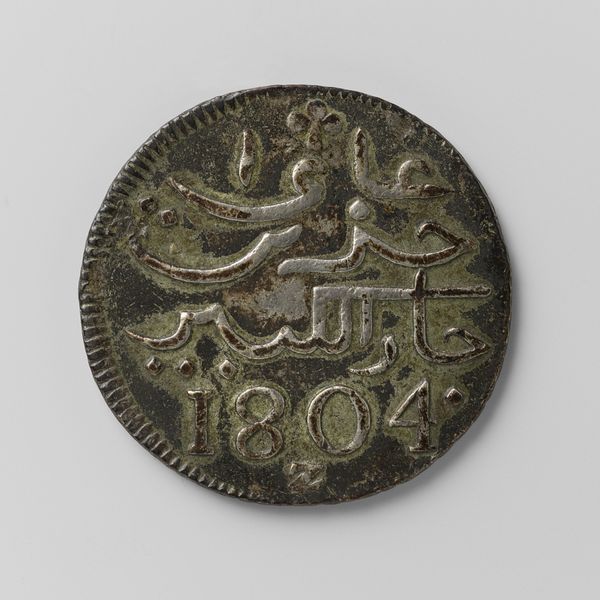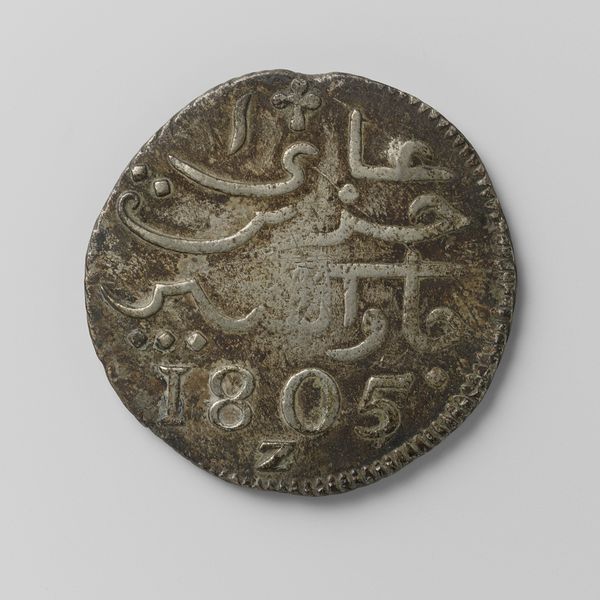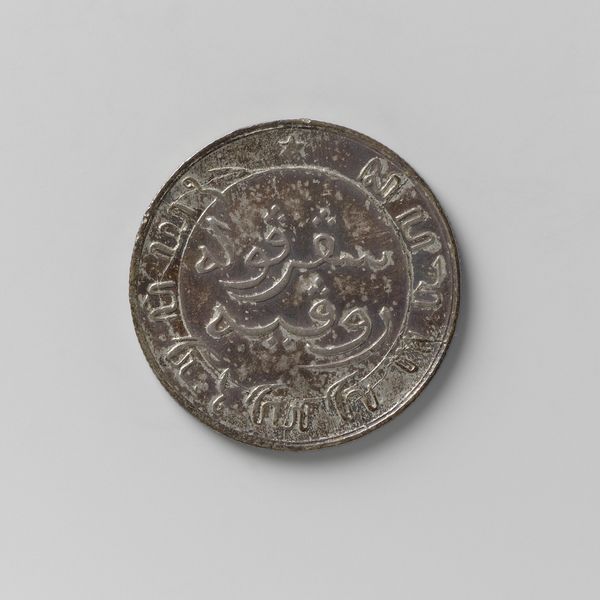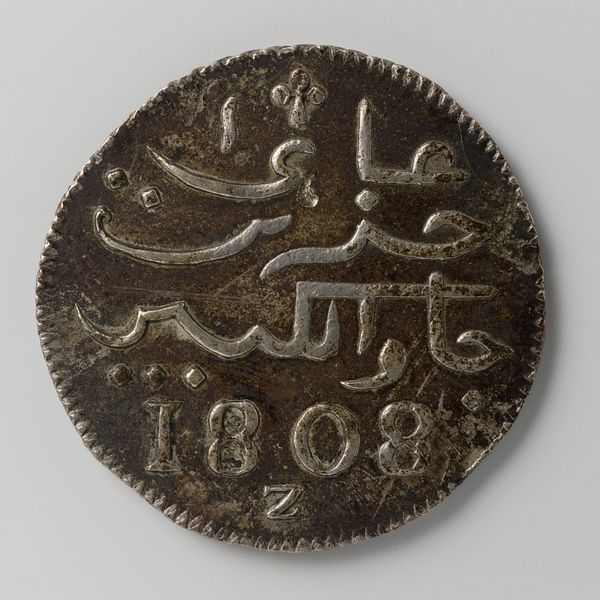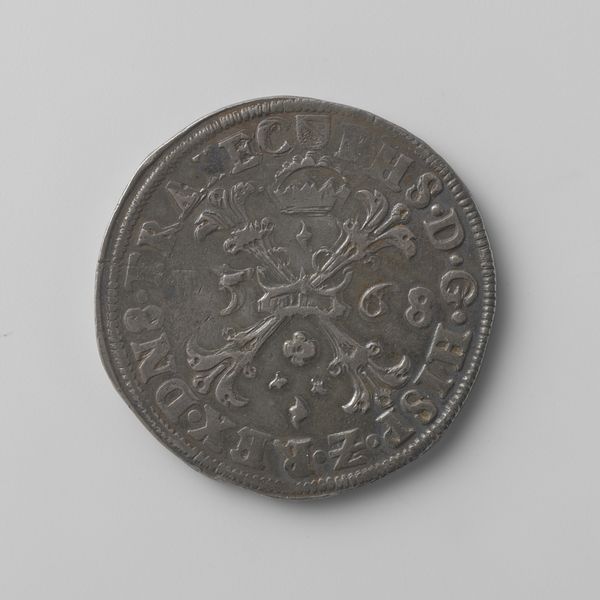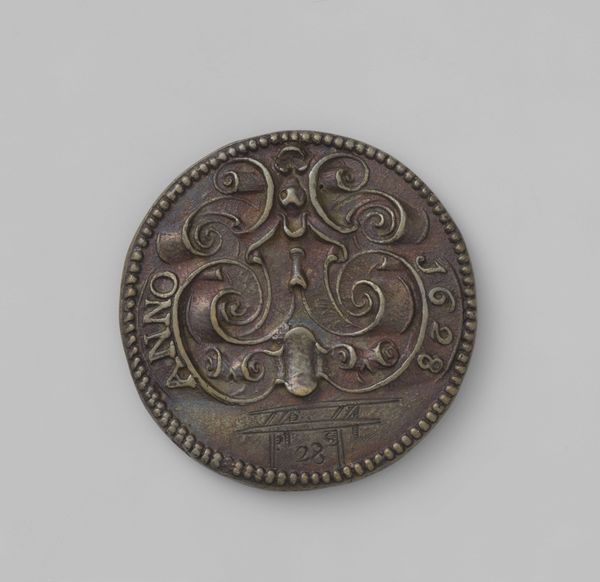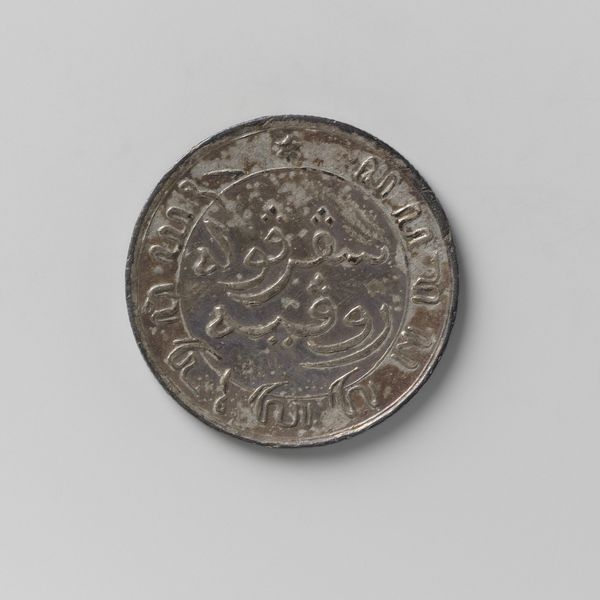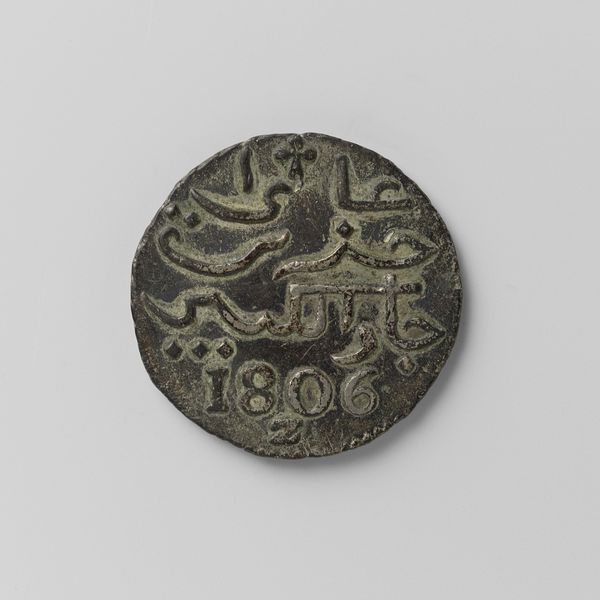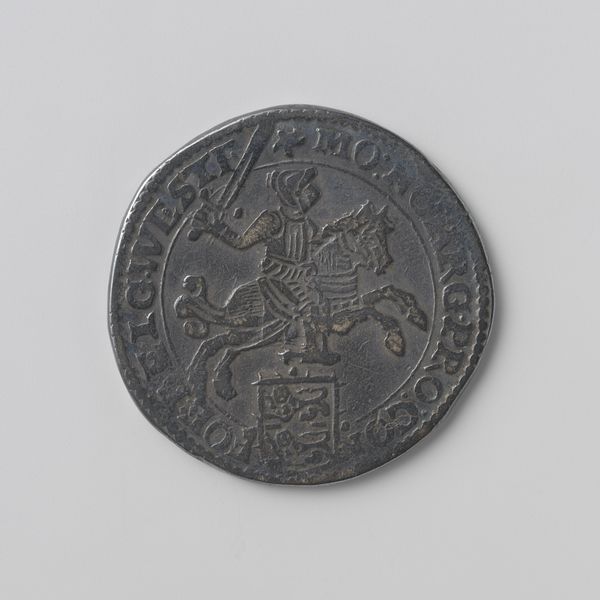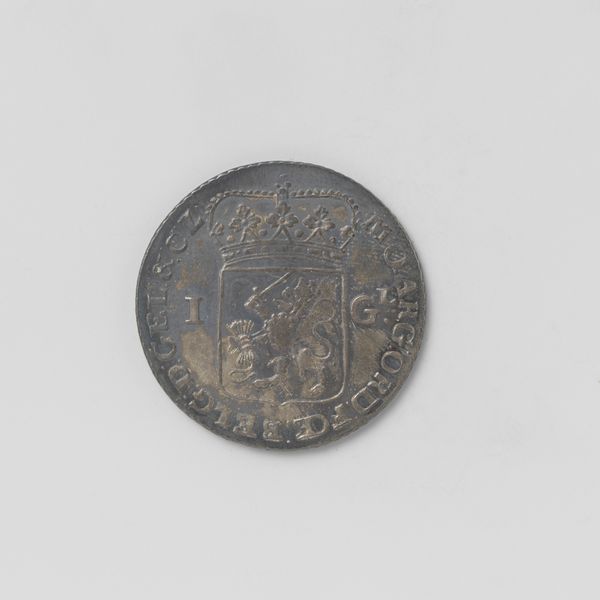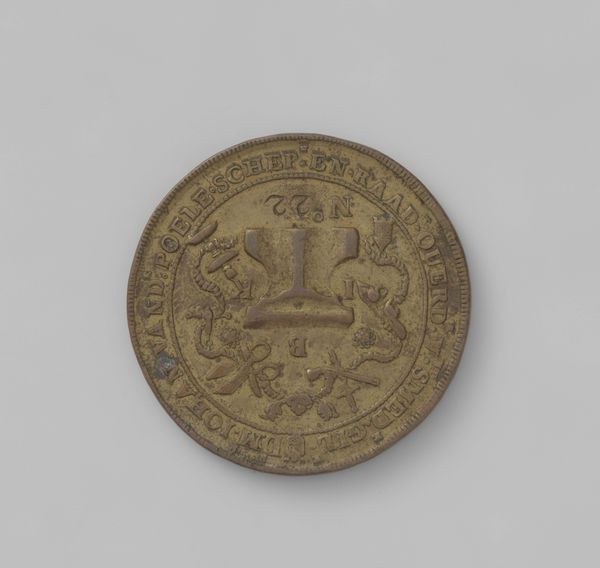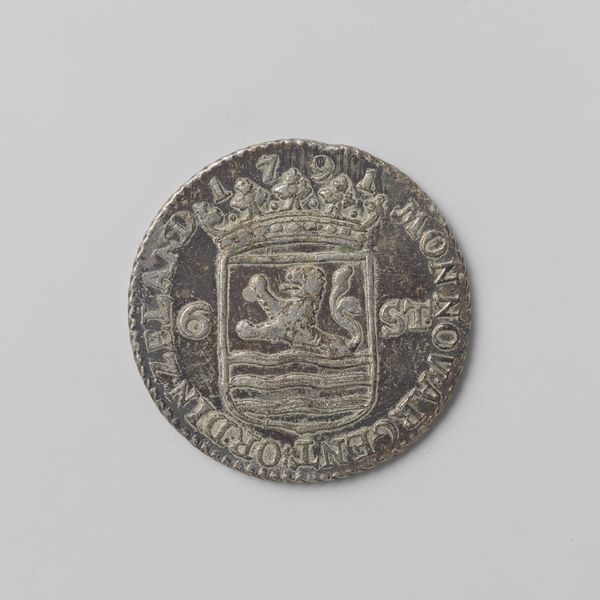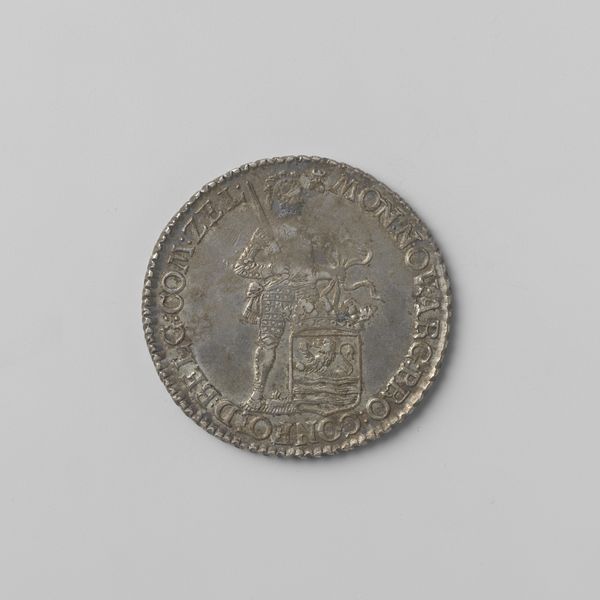
silver, metal, embossing
#
portrait
#
silver
#
metal
#
embossing
#
geometric
#
ancient-mediterranean
#
embossed
#
islamic-art
#
decorative-art
#
miniature
Dimensions: diameter 3.2 cm, weight 13.27 gr
Copyright: Rijks Museum: Open Domain
Curator: Here we have a silver coin from the Dutch East Indies, specifically Java, dating back to 1806. It’s referred to as a "Zilveren ropij." Editor: It looks incredibly worn and weathered. I immediately think of the hands it must have passed through and the exchanges it facilitated within a complex colonial system. Curator: Indeed, its materiality speaks volumes. Silver, in this context, highlights the extraction of resources and exploitation of labor central to Dutch colonial power. Consider the environmental costs of mining and the labor required to transform the raw silver into these coins. Editor: Absolutely. This isn't just currency; it's a physical manifestation of power dynamics. Who designed it, who minted it, and whose faces were, pointedly, NOT represented? We have geometric design and script of Arabic origin dominating. Curator: Those questions of representation are key. Examining the inscriptions and symbols gives us a window into the cultural landscape of Java under colonial rule. Islamic art and culture was very prominent. The embossing, a key technique here, might be rooted in local tradition. Editor: Embossing feels apt here, as it mirrors the pressing, impressing, and imprinting the colonizers forced upon this land, these peoples, and their means. Consumption itself then becomes this loaded act. The very utility, trade, becomes an ideological tool. Curator: The year, 1806, is important too. It’s within the historical period of the Batavian Republic, a tumultuous era with shifting political landscapes across Europe, that shaped Dutch colonial administration in Java. The very context underscores themes of shifting empires. Editor: Exactly. It makes me think about globalization before globalization. To trace the trajectory of this coin feels like an art-historical autopsy that would lead us to a bigger critique of race, empire, labor, and capital in society. Curator: Ultimately, viewing this coin compels us to unpack broader conversations about value, power, and representation. We began with something small yet it reveals so much about society, oppression and hope. Editor: Yes, and through engaging with such artifacts, we can start to unravel histories of colonialism and create more equitable and just frameworks of labor in the current climate. Its weight belies the grand scale of stories hidden within.
Comments
No comments
Be the first to comment and join the conversation on the ultimate creative platform.
